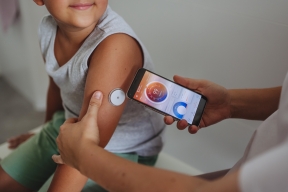Pediatric Diabetes Grows At Alarming Rate
From an interview with
Lisa Woodberry, NP
McLeod Pediatric and Adult Endocrinology
Diabetes is growing at an alarming rate, affecting more than 200,000 children and teens under 20 years of age. McLeod Health nurse practitioner Lisa Woodberry tells us more about this incurable disease.
“There are two main types of diabetes, Type 1 and Type 2. Type 1 diabetes results when the child’s body no longer produces an important hormone called insulin. Type 2 diabetes develops when the body becomes resistant to that insulin or when the pancreas is unable to produce enough insulin. Common signs and symptoms of both types of diabetes include increased thirst and urination, headaches, and blurry vision. Type 1 diabetes patients may notice weight loss, whereas Type 2 may notice weight gain.
Talk to a pediatrician near you if you notice that your child has any of these symptoms. Today’s technology can help diabetic patients live a happy, healthy life free of long-term complications.”
More Facts About Pediatric Diabetes
According to the World Health Organization (WHO), the frequency of diabetes is rising around the world, and studies are showing children are at increasing risk of developing the disease. Over time, diabetes can damage the heart, blood vessels, eyes, kidneys and nerves, causing chronic problems and early death.
What is type 1 diabetes?
Type 1 diabetes (sometimes called insulin-dependent, juvenile or childhood-onset diabetes) occurs when the pancreas does not produce enough insulin, a hormone that regulates blood sugar. The cause is not known, but it is thought to be the result of a combination of genetic and environmental factors.
Many countries are documenting higher numbers of newly diagnosed cases of Type 1 diabetes, particularly in younger children. Interestingly, some disease patterns among children resemble infectious disease epidemics. Currently, there is no known way to prevent Type 1 diabetes.
What is type 2 diabetes?
Type 2 diabetes (sometimes called non-insulin-dependent or adult-onset diabetes) happens when the body cannot effectively use the insulin it produces. Often preventable, it can result from excess body weight and physical inactivity, and sometimes, a genetic predisposition.
Recently, Type 2 diabetes has increasingly been reported in children and adolescents, so much so that in some parts of the world, Type 2 diabetes has become the main type of diabetes in children. The global rise of childhood obesity and physical inactivity is widely believed to play a crucial role. Healthy eating and lifestyle habits are a strong defense against the disease.
-
McLEOD REGIONAL MEDICAL CENTER FLORENCE
843-777-2000 -
McLEOD DARLINGTON
843-777-1100 -
McLEOD DILLON
843-774-4111 -
McLEOD LORIS
843-716-7000 -
McLEOD SEACOAST
843-390-8100 -
McLEOD CHERAW
843-537-7881 -
McLEOD CLARENDON
803-433-3000



-
McLEOD REGIONAL MEDICAL CENTER FLORENCE
843-777-2000 -
McLEOD DARLINGTON
843-777-1100 -
McLEOD DILLON
843-774-4111 -
McLEOD LORIS
843-716-7000 -
McLEOD SEACOAST
843-390-8100 -
McLEOD CHERAW
843-537-7881 -
McLEOD CLARENDON
803-433-3000
 Find a Doctor
Find a Doctor  Locations
Locations  Services
Services 